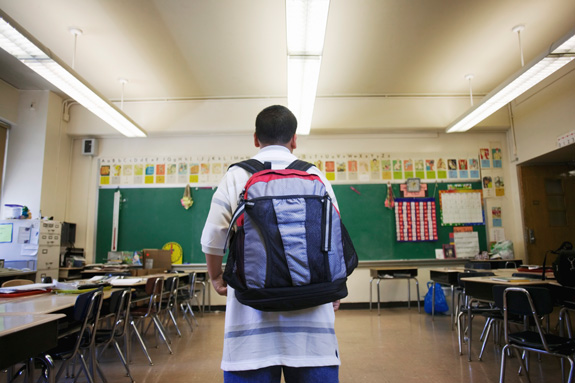Report: Changes Fail To Curb Restraint, Seclusion

A new report suggests that local decisions may have a greater impact on the use of restraint and seclusion in schools than changes at the state level. (Thinkstock)
Despite many states making policy updates in recent years, a new analysis suggests that students with disabilities continue to experience high rates of restraint and seclusion at school.
The practices were employed at similar levels during both the 2011-2012 school year and the 2009-2010 year, according to a review of federal education data conducted by researchers at the University of New Hampshire.
Between those time periods, the report indicates that about half of states revised their policies on restraint and seclusion.
Advertisement - Continue Reading Below
The analysis found that 69 percent of school districts reported no use of restraint and 87 percent did not use seclusion, but a small percentage of districts had “exceedingly high rates.” School districts at both the high and low ends were found in nearly every state.
“Although restraint and seclusion rates across states continue to range considerably, between-state variation is overshadowed by the tremendous within-state variation,” the researchers said. “These findings suggest that local policy decisions and other factors related to school culture, rather than state policy, seem to be the greatest determinants of restraint and seclusion rates.”
During the 2011-2012 school year, the U.S. Department of Education found that kids with disabilities accounted for three-quarters of those who were physically restrained and 58 percent of students who were placed in seclusion or some other form of involuntary confinement at schools across the country. (Read all of Disability Scoop’s coverage of restraint and seclusion »)
Efforts to enact federal legislation to regulate restraint and seclusion in schools have been unsuccessful, leaving a patchwork of state and local policies.
Read more stories like this one. Sign up for Disability Scoop's free email newsletter to get the latest developmental disability news sent straight to your inbox.
